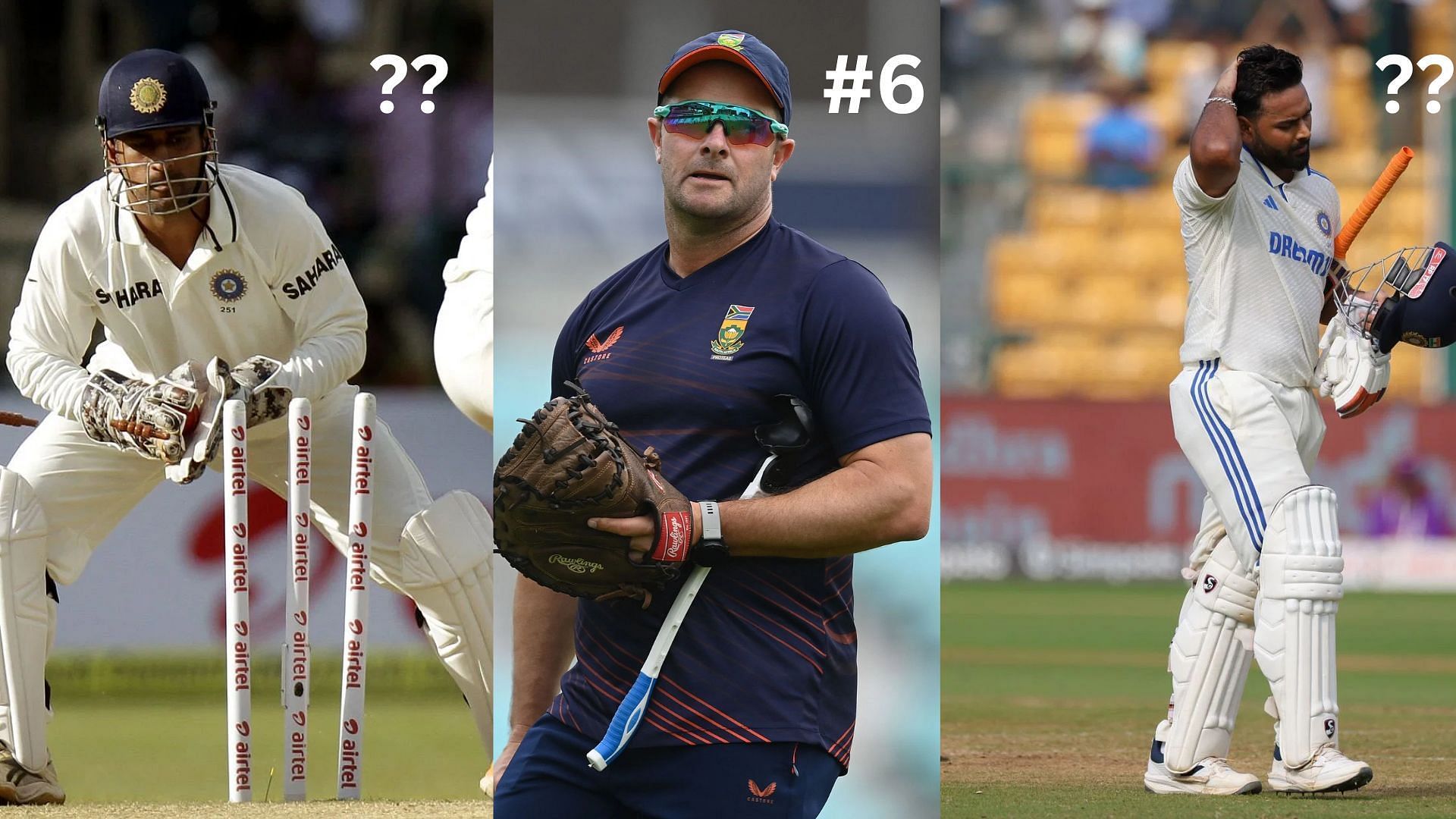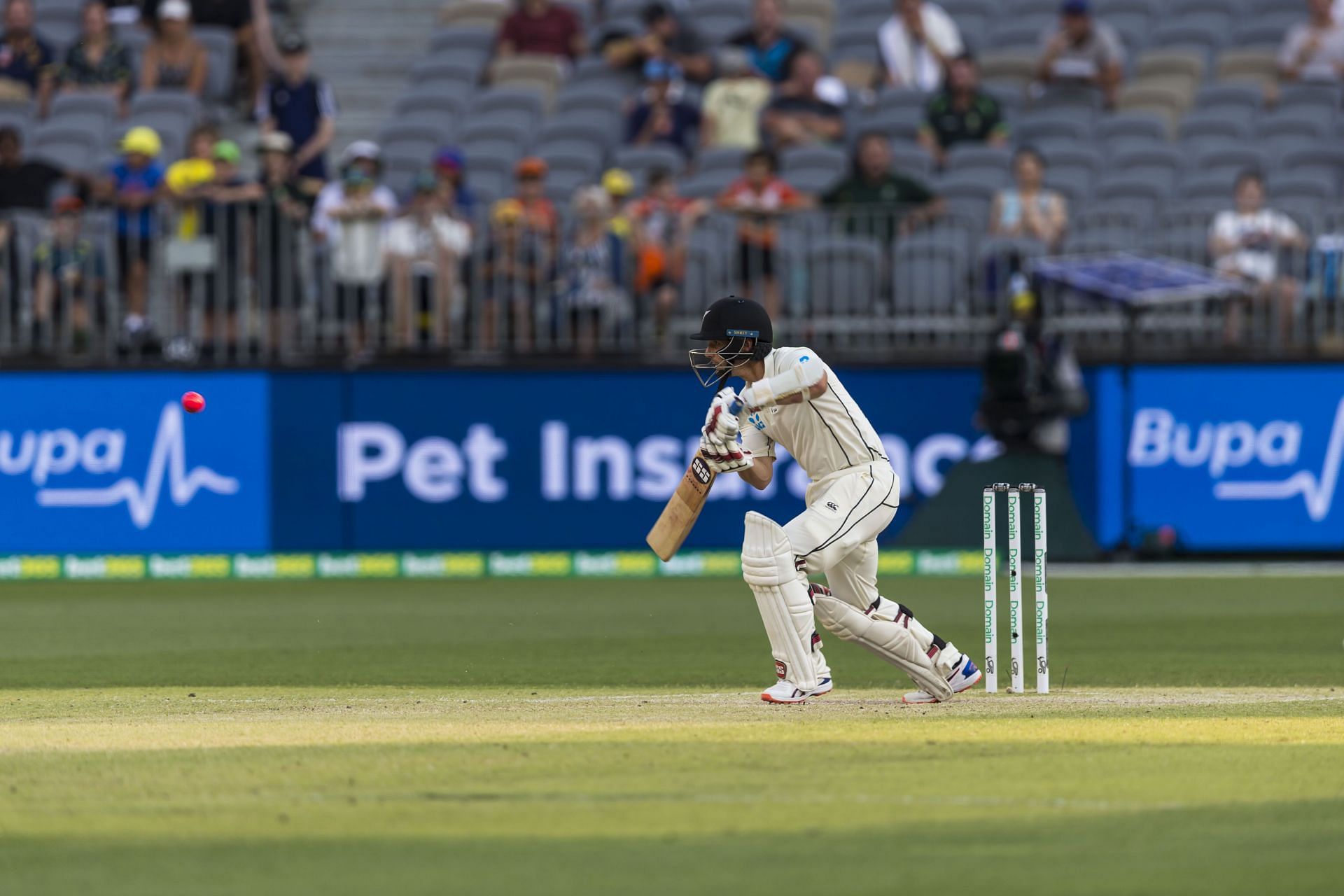
Top 10 men's Test wicketkeeper-batters of the 21st century ft. MS Dhoni, Rishabh Pant
Wicket-keepers have always been a fundamental part of cricket, yet they often do not get the same attention or mention as other roles. The presence of a skilled wicket-keeper brings a different dimension to the team.
Their sharp reflexes and strong presence behind the stumps are instrumental in creating opportunities and ensuring team success. In the fast-paced 21st-century game, wicket-keepers have evolved to not only excel with the gloves but also contribute significantly with the bat, adding depth to their team’s batting lineup, particularly in Test cricket.
Here, we look at the top 10 men’s Test wicket-keepers of the 21st century, ranked on their dismissals, consistency, and impact with the bat.
Top 10 men's Test wicketkeeper-batters of the 21st century
#10 Kumar Sangakkara (Sri Lanka)
Although Kumar Sangakkara focused more on batting later in his Test career, his 151 dismissals as a wicket-keeper remain noteworthy. Averaging 40 with the bat as a keeper and scoring seven centuries, Sangakkara excelled in both roles early in his career. His technical skill and reliability both behind the stumps and as a batter made him an invaluable asset to Sri Lanka’s lineup, helping them reach new heights in the cricketing world.
#9 Mushfiqur Rahim (Bangladesh)
Mushfiqur Rahim, with 113 dismissals in Tests, has been a key figure in Bangladesh’s batting lineup. Over the years, he evolved from a lower-order batter to one of the team’s most reliable scorers. His innings against India in 2010, which set the record for the fastest Test hundred by a Bangladeshi batter at the time, showcased his ability to score vital runs under pressure. Mushfiqur’s role extended beyond that of a wicket-keeper, often providing stability and experience for Bangladesh.
#8 Quinton de Kock (South Africa)

Quinton de Kock’s style, marked by fearless batting and sharp glovework, earned him early comparisons to greats like Adam Gilchrist and Mark Boucher. With 232 dismissals in just 54 Tests, de Kock established himself as a world-class wicket-keeper in a short span. His 3,300 runs, including six hundreds, showed his versatility and aggressive batting style. Although he retired early from Test cricket, his contributions left a lasting impact, especially in shaping South Africa’s approach in the longest format.
#7 Matt Prior (England)
Matt Prior, known for his aggressive style and competitive spirit, was crucial to England’s rise to the top of the Test rankings. With 256 dismissals and 4,099 runs in 79 Tests, Prior was both a skilled wicket-keeper and a dependable batter. His best moment came in New Zealand in 2013, where he saved the final Test with a gritty century, showing England’s fighting spirit. Prior’s influence behind the stumps and in the lower-middle order made him a valuable asset to England's setup.
#6 Mark Boucher (South Africa)
Mark Boucher is widely regarded as one of the most successful wicketkeepers in cricket history, holding the record for the most dismissals in Tests with 555 to his name. Over his career, Boucher established himself as a reliable figure behind the stumps and an essential part of South Africa's lineup.
His career with the bat was equally commendable, having amassed 5,515 runs, including five centuries and 35 fifties, making him a dependable batter. Unfortunately, a freak eye injury forced Boucher to retire prematurely, leaving his career tally of 998 dismissals in international cricket just shy of the 1,000-mark milestone.
#5 Rishabh Pant (India)
Rishabh Pant emerged as a game-changer for India, combining aggressive batting with effective wicket-keeping. With 138 dismissals in his first few years, Pant’s quick reflexes and batting fireworks have already made him a fan favorite. His 89* at Brisbane, which led India to a historic series win, and other impactful innings in Australia and England, highlighted his fearless approach and consistency in big games. With six Test hundreds already, Pant has matched Dhoni’s record in fewer matches, promising an exciting future.
#4 BJ Watling (New Zealand)

BJ Watling holds the record for the most dismissals by a New Zealand wicket-keeper, with 265 in Tests. Watling’s contributions go beyond just his glove work; his batting skill and resilience made him a crucial part of New Zealand’s “golden generation” of cricketers. He scored 3,398 runs at an average of 39.05, with seven centuries, contributing vital runs in challenging conditions. Watling was also a part of New Zealand’s historic victory in the inaugural World Test Championship in 2021.
#3 Brad Haddin (Australia)
Taking over from Gilchrist, Brad Haddin had big shoes to fill, and he delivered with consistency and reliability. Haddin claimed 270 dismissals in 66 Tests, while also contributing with the bat, scoring 3,266 runs, which included four hundreds and 18 fifties. His memorable performance during the 2013-14 Ashes series, where he scored 493 runs at an average of 61.62, helped Australia clinch a 5-0 series win. Haddin’s contributions as vice-captain and senior player established his place as a key figure in the Australian lineup.
#2 MS Dhoni (India)
MS Dhoni’s impact on cricket extends far beyond his 294 Test dismissals, as his tactical genius and calm demeanor set him apart as one of India’s finest. Dhoni adapted to the team’s needs by moving down the batting order, making significant contributions with 4,876 runs, six centuries, and 33 fifties. His unorthodox but highly effective wicket-keeping and sharp game sense became invaluable for India. Beyond his dismissals and batting statistics, Dhoni’s influence and leadership have left an indelible mark on the game.
#1 Adam Gilchrist (Australia)
Adam Gilchrist transformed the role of a wicket-keeper with his aggressive batting approach and reliable keeping skills. With 416 Test dismissals, he ranks just behind Boucher, and his attacking mindset with the bat brought a new dimension to the position. Gilchrist scored an impressive 5,570 runs at an average of 47.60, which included 17 hundreds. His explosive batting style, coupled with his excellent skills behind the stumps, made him one of the most feared wicketkeeper-batters and a key player in Australia’s dominant Test side.